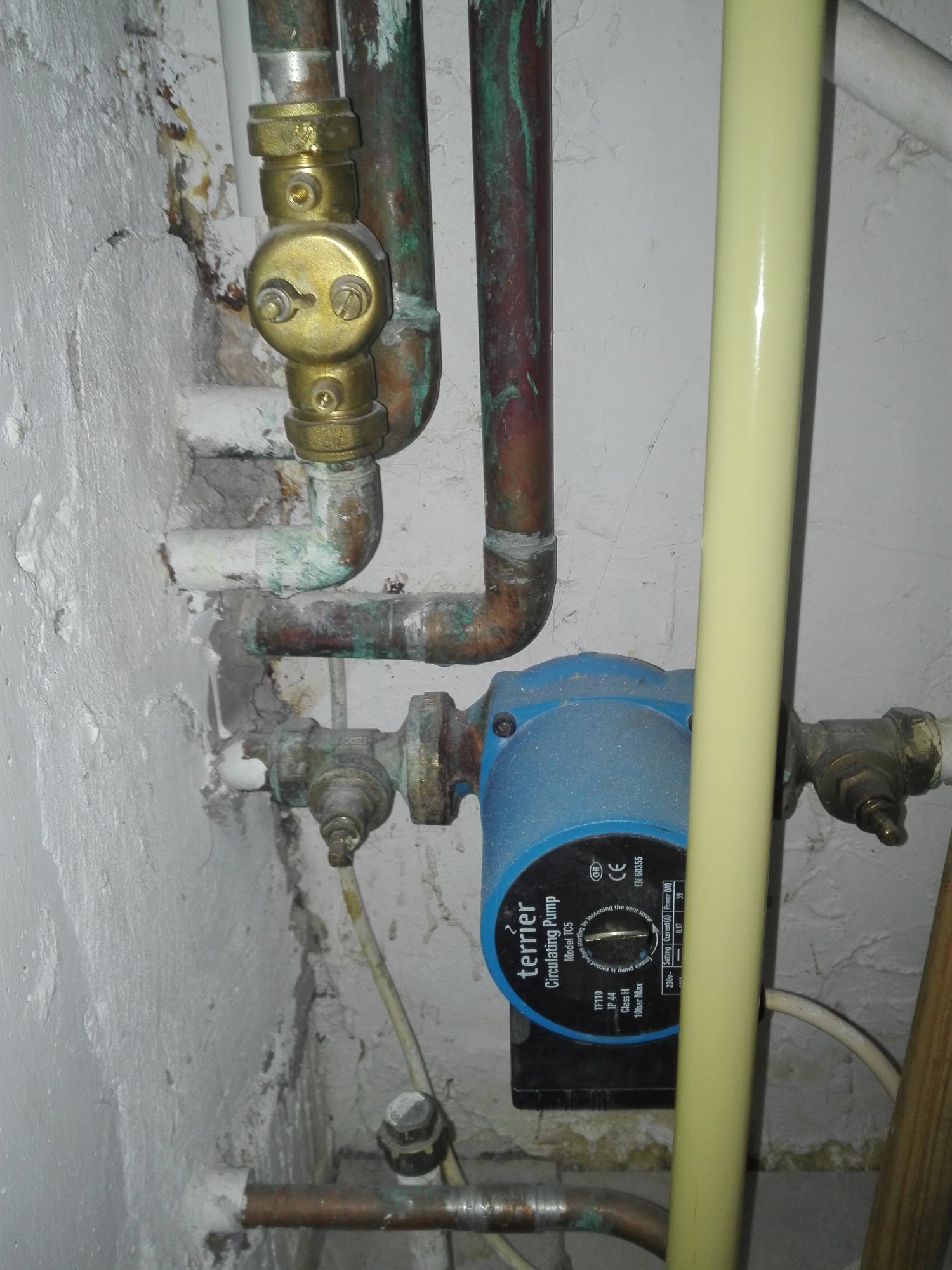I will try to break it down a bit, hope this helps. It's all to do with the way the system is controlled.
Fact 1. To have the hot water 'on' you need to have only the
boiler on
Fact 2. To have the central heating 'on', you need to have the
boiler 'on' and the pump running
WITH YOUR SYSTEM NOW
As your system is
wired now the hot water control switch at the programmer controls
only the boiler, and the central heating switch controls
only the pump. So to have heating 'on' you need to have the hot water 'on' to operate the boiler, and also the central heating 'on' to operate the pump.
WITH A PROPERLY WIRED C PLAN
A 'C Plan' when installed
properly will allow the hot water channel to control only the boiler as now. But,
it will also allow the central heating to control the pump and the boiler so you can switch
only the central heating 'on' and it will
start the pump and the boiler.
If hot water is not required, the motorised valve in the pipe to the hot water cylinder remains shut, so only the central heating operates.
all the information I have found/read says that gravity systems need the CH to be locked to the HW.
This is correct for a standard gravity system, which is what you have now, and so this is what you have to do. BUT if you were to convert it to a proper 'C PLAN' you would get separate control of the heating and hot water. Which is what it was designed for.
Just to clarify (which is where i think the confusion comes from) the CH pumps hot water through the boiler and then round the system, completely independently of the hot water tank upstairs?
Correct. Both are connected to the boiler, but they have separate circuits, the heating circuit is pumped, and the hot water circuit relies on natural convention for the water to circulate around the hot water cylinder.
If so, then why is the CH normally locked to the HW?
Because at the moment, the hot water is wired such that it controls only the boiler. If you switched only the heating 'on' just the pump would run and would circulate the water, but nothing would get hot. So, you also have to have the hot water on as well, so that the boiler operates.



